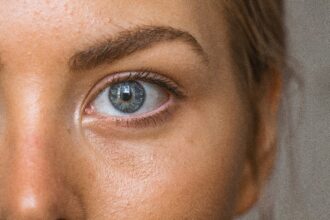For those grappling with chronic thyroid eye disease (TED), a relatively new prescription medicine, Tepezza, has emerged as a beacon of hope. Tepezza, approved by the FDA in January 2020, promises relief from the debilitating symptoms of TED, including bulging eyes, double vision, and eye pain. What is Tepezza? It is an IGF-1 receptor inhibitor that alleviates symptoms of TED and is associated with autoimmune conditions like Graves’ disease. This article delves into the science behind Tepezza, exploring the clinical trials and research findings that validate its efficacy and safety.
At Mass Tort America, we understand the critical nature of finding effective treatment options for TED. With a focus on helping patients nationwide, our dedicated team is here to provide the necessary support and resources. Our Concierge Team assists in coordinating care, ensuring that you have access to the best possible treatments and legal assistance.
Clinical Trials And Tepezza FDA Approval
The development of Tepezza involved a series of rigorous clinical trials to ensure its effectiveness and safety for patients with TED and thyroid disease. The pivotal phase 3 OPTIC trial was instrumental in demonstrating the drug’s potential. Conducted with a double-blind, placebo-controlled design, this trial enrolled 83 patients with active thyroid eye disease. Participants received Tepezza or a placebo in eight infusions over 24 weeks.
Results from the OPTIC trial were promising. Approximately 83% of patients treated with Tepezza experienced a significant reduction in proptosis (eye bulging) compared to just 10% in the placebo group. Additionally, 68% of Tepezza-treated patients reported improved quality of life, highlighting the drug’s impact beyond mere symptom relief.
The FDA’s approval of Tepezza was based on the robust data from the OPTIC trial, marking a significant milestone in the treatment of TED. The drug’s mechanism involves inhibiting the insulin-like growth factor-1 receptor (IGF-1R), which plays a crucial role in the inflammation and tissue expansion characteristic of TED. This targeted approach sets Tepezza apart from other treatments, offering a novel and effective solution to treat thyroid eye disease.
Extended Research And Long-Term Effects
Following the drug evaluation initial approval, researchers continued to investigate the long-term effects and benefits of Tepezza. A follow-up study, the OPTIC-X trial, assessed the durability of Tepezza’s effects and the potential need for additional treatment cycles in treating thyroid eye disease. This open-label extension study provided further insights into the drug’s sustained efficacy.
OPTIC-X involved patients who completed the original OPTIC clinical trial, offering them the opportunity for additional Tepezza infusions if their symptoms recurred. The results were encouraging, with many patients maintaining the improvements achieved during the initial treatment phase. Moreover, those who required further infusions continued to experience positive outcomes, reinforcing the drug’s long-term benefits.
The extended research also explored the safety profile of Tepezza over prolonged use. Common side effects included muscle cramps, nausea, and hearing impairment, which were generally mild to moderate in severity. Importantly, no new safety concerns emerged during the extended studies, providing reassurance about the drug’s risk-benefit profile.
Real-World Applications And Patient Outcomes
Beyond clinical trials, real-world data on Tepezza have further validated its effectiveness and safety. Post-marketing surveillance and patient registries have played a crucial role in monitoring the drug’s impact in broader, more diverse populations. These studies have reinforced the positive findings from clinical trials, showcasing consistent improvements in symptoms and quality of life among patients.
Patient testimonials and case reports highlight the transformative effects of Tepezza. Individuals who previously struggled with severe TED symptoms have reported significant relief and a return to normal activities. This real-world evidence underscores the drug’s potential to change lives and offers hope to those affected by this challenging condition. Tell your doctor about any side effects or concerns during treatment.
While Tepezza has demonstrated remarkable benefits, ongoing research aims to optimize its use and address any remaining questions. Studies are exploring the ideal timing of treatment, potential combinations with other therapies, and the drug’s effects on different TED subtypes. This continuous research effort ensures that patients receive the most effective and personalized care possible.
How Tepezza Works: Mechanism Of Action
Tepezza operates by inhibiting the insulin-like growth factor-1 receptor (IGF-1R), a key player in the pathogenesis of TED thyroid eye disease. This receptor is involved in the autoimmune process that leads to inflammation and tissue expansion behind the eyes. By blocking IGF-1R, Tepezza effectively reduces the inflammatory response and prevents further tissue damage behind the eye.
The drug’s targeted mechanism makes it a highly effective treatment option. Unlike other therapies that may provide only symptomatic relief, Tepezza addresses the underlying cause of TED. This approach not only alleviates symptoms but also helps prevent the progression of the disease, offering patients a more comprehensive treatment solution.
Patient Selection And Eligibility Criteria
Tepezza is primarily indicated for patients with active thyroid eye disease, particularly those with moderate to severe symptoms. The selection of appropriate candidates is crucial to maximize the drug’s benefits and minimize potential risks. Typically, patients undergoing Tepezza treatment have not responded adequately to conventional therapies for thyroid hormone, such as corticosteroids or radiation.
Eligibility criteria for Tepezza include an active disease phase, evidence of significant inflammation, and the absence of contraindications such as severe uncontrolled systemic illnesses. By carefully selecting patients based on these criteria, healthcare providers can ensure that those who receive Tepezza are the ones most likely to benefit from its therapeutic effects.
Potential Side Effects, Double Vision, And Safety Profile
While Tepezza has shown substantial efficacy, it is essential to be aware of potential side effects. Common adverse effects reported in clinical trials include muscle cramps, nausea, alopecia (hair loss), fatigue, and hearing impairment. Most side effects are mild to moderate in severity and tend to resolve after the completion of treatment.
Monitoring for side effects is a critical aspect of Tepezza therapy. Healthcare providers should conduct regular assessments and provide patients with guidance on managing any adverse reactions. Despite the occurrence of side effects, the overall safety profile of Tepezza remains favorable, with the benefits often outweighing the risks for most patients.
Impact Of Tepezza Thyroid Eye Disease On Quality of Life
One of the most significant benefits of Tepezza is its positive impact on patients’ quality of life. Individuals with TED often experience debilitating symptoms that affect their daily activities, self-esteem, and overall well-being. By reducing proptosis and other symptoms, Tepezza helps restore a sense of normalcy for many patients.
Improvements in quality of life are not limited to physical symptoms. Patients often report enhanced emotional well-being and increased social interactions after receiving Tepezza’ treatment. These outcomes highlight the drug’s comprehensive benefits, extending beyond mere symptom relief to significantly improving overall patient satisfaction and life quality.
Comparing Tepezza With Traditional Treatments
Traditional treatments for TED, such prescription drugs such as corticosteroids, radiation therapy, and surgical interventions, have varying degrees of success and associated risks. Corticosteroids can reduce inflammation but often come with significant side effects, including weight gain, mood changes, and increased infection risk. Radiation therapy, while effective for some, poses long-term risks and is not suitable for all patients.
Tepezza offers a promising alternative with a different safety and efficacy profile. Unlike traditional treatments that primarily manage symptoms, Tepezza targets the disease’s underlying mechanisms. This distinction makes Tepezza a groundbreaking option, providing hope for patients who have not found relief through conventional therapies.
Financial Considerations And Insurance Coverage
The cost of Tepezza can be a concern for many patients. However, insurance coverage and patient assistance programs can help mitigate these expenses. It is important for patients to work closely with their healthcare providers and insurance companies to understand their coverage options and access available financial support.
Manufacturers of Tepezza often provide patient assistance programs to help those who cannot afford the treatment. These programs can significantly reduce out-of-pocket costs, making treatment with Tepezza more accessible to a broader range of patients. Navigating the financial aspects of treatment can be complex, but support is available to ensure patients receive the care they need.
Future Directions In TED Treatment
Ongoing research continues to explore new treatment options and strategies for managing TED. Tepezza represents a significant advancement, but scientists are investigating additional therapies that could complement or enhance its effects. This includes exploring combination therapies, new drug targets, and personalized treatment approaches based on individual patient profiles.
The future of TED treatment looks promising, with the potential for even more effective and safer therapies on the horizon. Continued investment in research and clinical trials will be crucial to uncovering these new options and improving the lives of patients with TED.
Patient Support And Advocacy
Living with TED can be challenging, but support is available. Numerous patient advocacy groups and organizations provide resources, education, and emotional support for those affected by TED. These groups can help patients connect with others facing similar challenges, offering a sense of community and shared experience.
Advocacy efforts also play a crucial role in raising awareness about TED and the importance of research and access to treatment. By supporting these organizations, patients and their families can contribute to the broader effort to improve care and outcomes for all individuals affected by TED.
Tepezza Infusion Process: What To Expect
The infusion process for Tepezza is straightforward but requires careful monitoring. Typically, patients receive Tepezza in eight infusions over approximately 24 weeks. Each infusion session lasts about 60 to 90 minutes, during which the drug is administered intravenously by a healthcare professional.
Patients should inform their doctor or nurse about any existing health conditions or medications, including over-the-counter medicines. This information helps ensure the safe administration of Tepezza and minimizes the risk of adverse reactions. Common infusion reactions include mild to moderate side effects like nausea, muscle spasms, and altered sense of taste, which usually subside after the treatment session.
Managing Side Effects Of Tepezza
Side effects of Tepezza, while generally manageable, can vary among patients. The most common side effects include muscle and fat tissue changes, nausea, hair loss, dry skin, and hearing problems. In rare cases, patients may experience more severe reactions such as hearing loss or high blood sugar levels.
It is crucial for patients to maintain open communication with their healthcare providers to manage these side effects effectively. Regular monitoring and prompt reporting of any adverse effects can help mitigate potential risks and ensure a safer treatment experience. Patients should also avoid over-the-counter medicines that may interact with Tepezza unless advised by their doctor.
Role Of Thyroid Hormones In TED
Thyroid hormones play a significant role in the development and progression of TED. The disease is often associated with autoimmune disorders like Graves’ disease, autoimmune disorder where the immune system attacks the thyroid gland, leading to excessive production of thyroid hormones. This hormonal imbalance can trigger inflammation and tissue changes behind the eyes.
Tepezza targets the thyroid-stimulating hormone receptor (TSHR) and insulin-like growth factor-1 receptor (IGF-1R), both of which are implicated in TED. By inhibiting these receptors, Tepezza helps reduce inflammation and prevents further tissue expansion, addressing the root causes of the disease.
Understanding Orbital Decompression Surgery
Orbital decompression surgery is a traditional treatment option for severe TED cases. This surgical procedure involves removing some of the bone and fat around the eyes to create more space for the inflamed tissues, thus reducing eye bulging and pressure on the optic nerve.
While effective, orbital decompression surgery comes with risks and potential complications, such as double vision and eyelid retraction. Tepezza offers a non-surgical alternative that can achieve similar outcomes with fewer risks. However, in some cases, a combination of Tepezza treatment and surgery might be necessary to achieve optimal results.
Impact Of Autoimmune Diseases On TED
Autoimmune diseases like Graves’ disease and inflammatory bowel disease (IBD) can exacerbate TED. These conditions involve the immune system attacking the body’s tissues, leading to chronic inflammation and other complications. The interconnectedness of these diseases makes managing TED more challenging.
Tepezza’s targeted approach to inhibiting IGF-1R and TSHR can be particularly beneficial for patients with coexisting autoimmune disorders. By addressing the underlying autoimmune processes, Tepezza helps reduce the overall inflammatory burden, improving outcomes for patients with complex medical histories of autoimmune disease.
Why Choose Mass Tort America?
At Mass Tort America, we are committed to helping you navigate the complexities of treatment and legal assistance for TED. Our experienced team understands the challenges you face and is dedicated to providing the support you need. By choosing Mass Tort America, you benefit from our extensive expertise and personalized approach, ensuring that you receive the best possible care and representation.
We offer comprehensive services, from coordinating medical treatments to pursuing legal claims on your behalf. Our Concierge Team is here to assist you every step of the way, making the process as seamless and stress-free as possible. If you or a loved one is dealing with TED, reach out to Mass Tort America today for a consultation. Contact us at 800-356-4338 or visit our contact form at https://masstortamerica.com/contact/.



















